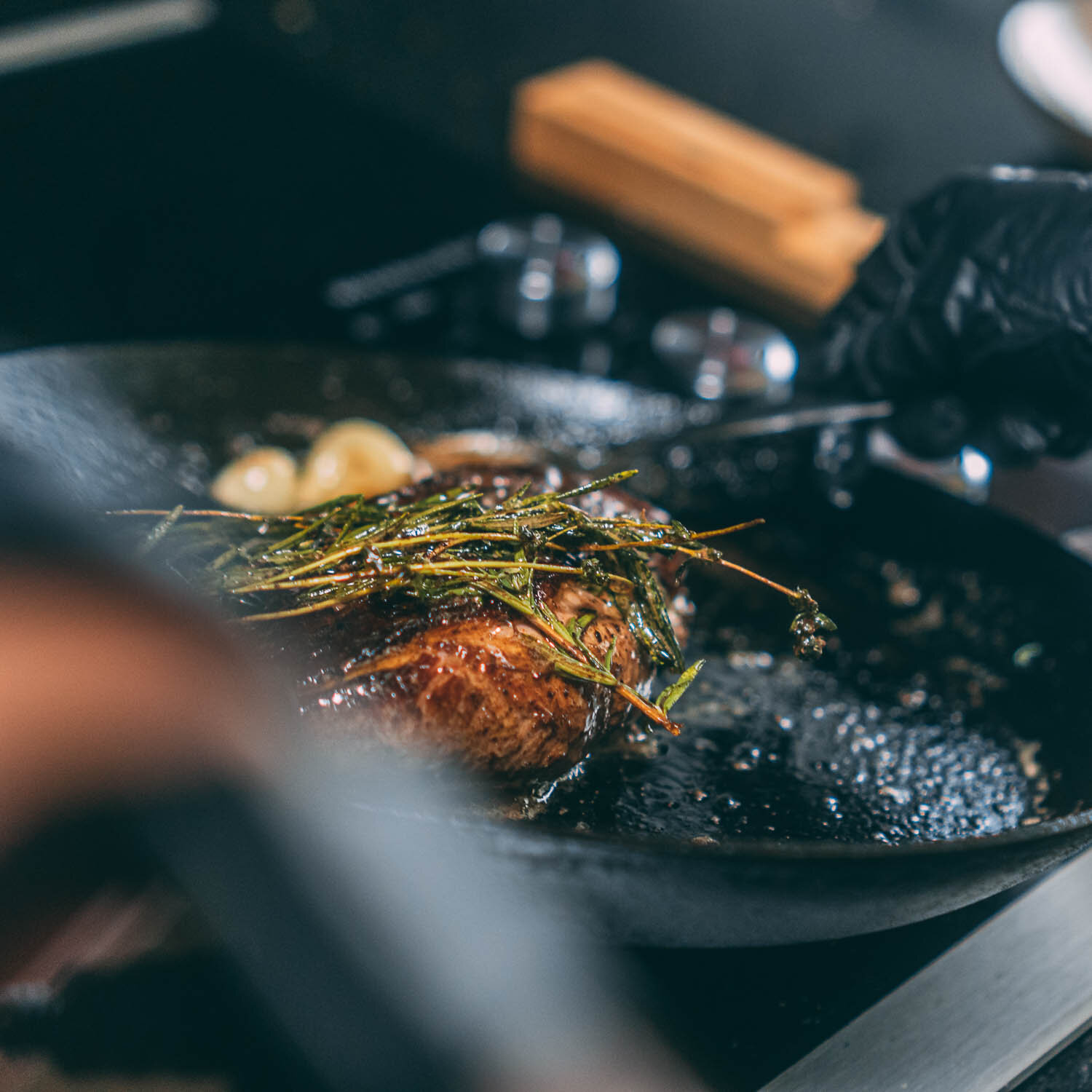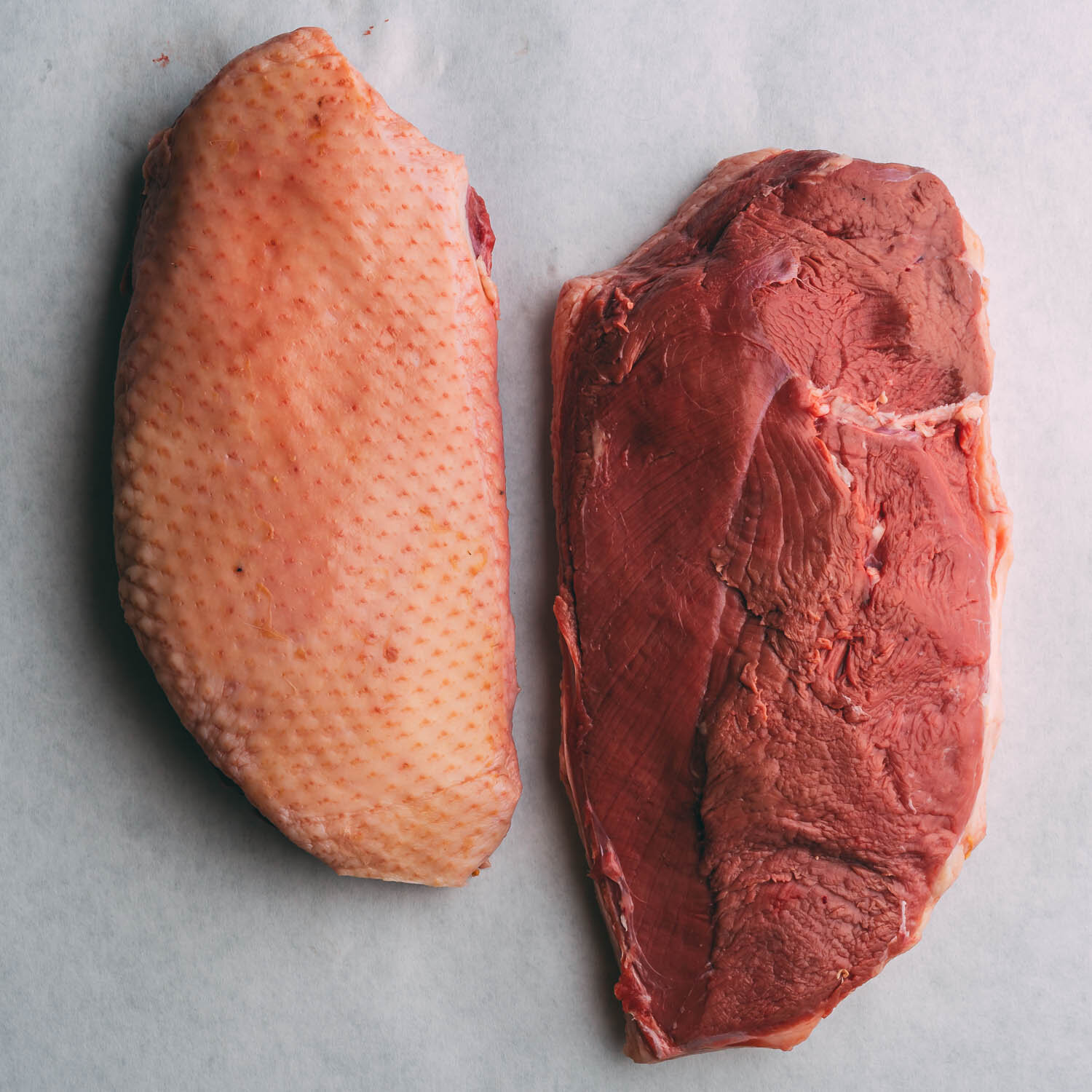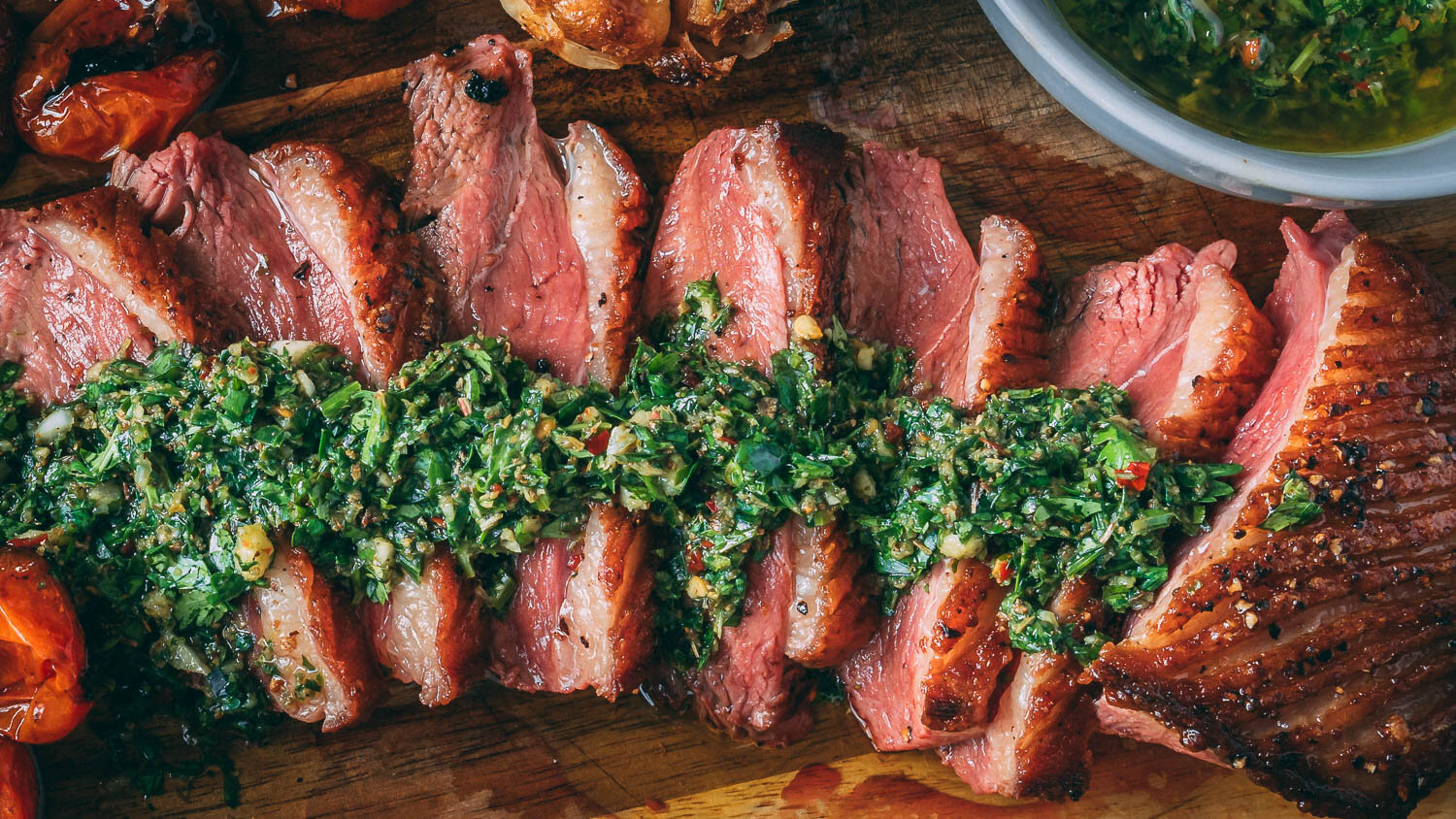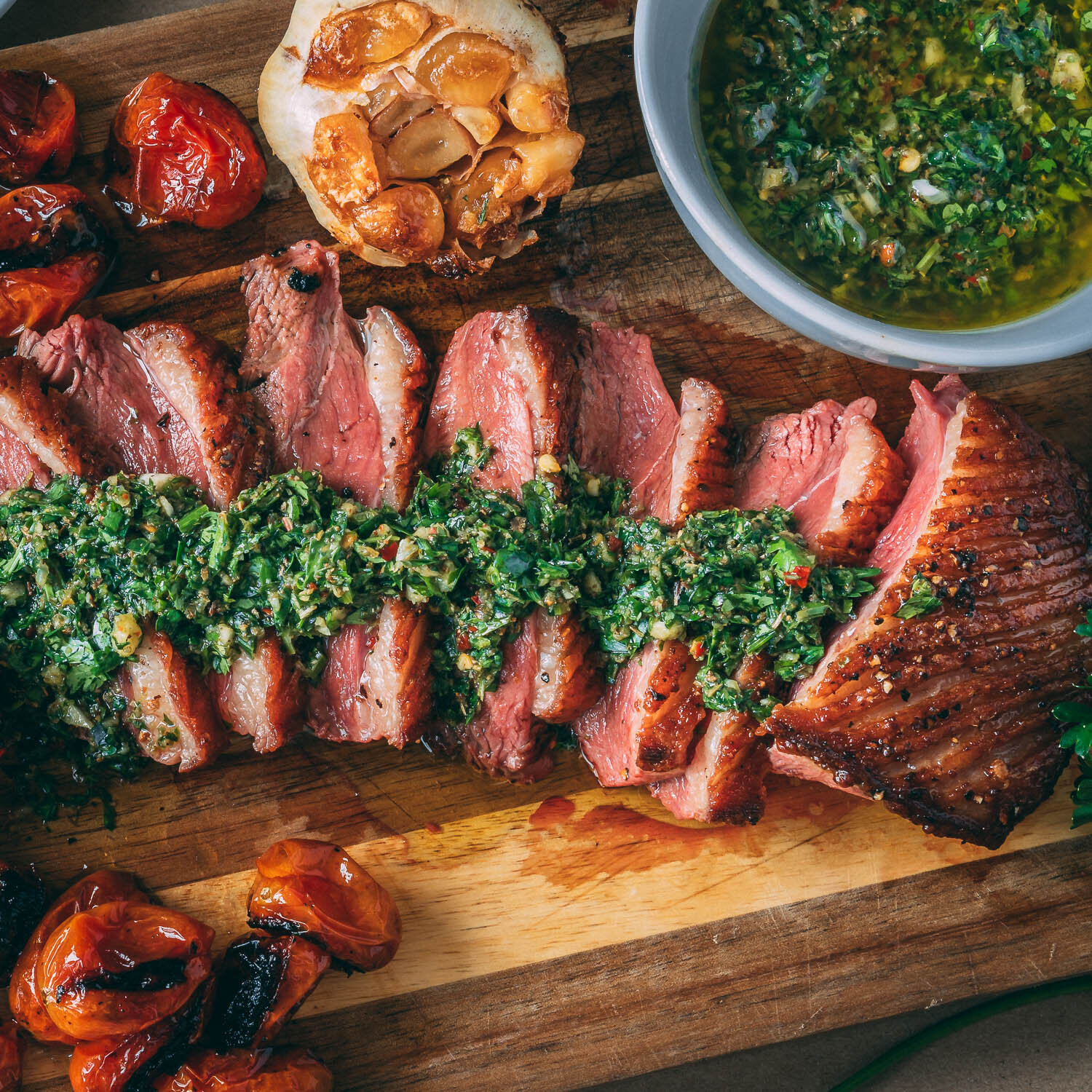The Basics
Pan + Duck Breast
The Metal
Equipment
Both carbon/stainless steel and cast iron pans are ideal when paired with a large enough burner. Both types of pans will provide a crispy duck breast skin finish.
The Meat
Duck Steak
Duck breast is similar to steak. Just like the wide variety of steak cuts, different kinds of duck breast have unique characteristics and features. Traditional pekin duck “feels” more like chicken. DUCKCHAR Moulard Duck Breast is beefy. That’s why chefs affectionately describe it as duck steak. And it’s the duck featured in this recipe.
Prep time
5 min
Serves
2 - 3 ppl
Cook time
14 - 20 min
Pro Tip: DUCKCHAR is best served medium-rare
Ingredients
DUCKCHAR Moulard Duck Breast >
Kosher salt
Pepper
1/4 cup chopped cilantro
1/4 cup chopped parsley
4 garlic cloves
2 tablespoons oregano
3 teaspoons crushed red pepper
1/2 teaspoon cayenne pepper
1 tablespoons red wine vinegar
1/2 cup olive oil
Score duck breast skin
Step 1 - As you undertake the scoring process, take care to steer clear of cutting into the meat. As you create these score lines, you'll observe that the skin's thickness differs depending on which end of the duck breast you're addressing. Be particularly attentive to this variation in thickness to prevent any inadvertent incisions into the meat. Due to the substantial skin layer on Moulard Duck Breast, it's imperative to establish numerous scoring lines across the breast: more lines yield better results. Begin with elongated parallel lines running lengthwise, followed by a similar pattern oriented widthwise. Proceed to season both sides of the duck breast with Kosher salt and pepper. Additionally, preheat your oven to 400°F.
Sear duck breast
Step 2 - Before transitioning to oven cooking, initiate the process by searing the duck breast skin-side down in an oven-safe pan set over moderately high heat. Allow this searing phase to persist for approximately 6 to 10 minutes. As the duck breast cooks, take care to consistently ladle out the rendered fat. Indications that it's time for roasting will emerge when the skin takes on a thin, golden, and crispy texture.
Step 3 - Swiftly achieve a golden brown hue on the meat side. This phase should conclude in 15 to 30 seconds, influenced by the temperature of the pan.
Roast duck breast
Step 4 - Proceed to roast the duck breast in the oven, positioning it skin side up. Allow it to cook until the internal temperature attains 131 degrees F. This phase is anticipated to span 5 to 15 minutes.
After roasting in the oven, gently drape a piece of foil over the oven-roasted duck breast, ensuring a loose covering. Let the duck breast rest for 5 minutes during this resting interval. Over this period, the temperature within the duck breast will ascend to an optimal 135 degrees F, culminating in a perfect medium rare result. Conclude by slicing and serving, complemented by chimichurri. Detailed directions for the sauce are provided below.
Prepare chimichurri
Step 5 - Crafting chimichurri involves amalgamating cilantro, parsley, garlic, oregano, crushed red pepper, and vinegar within a food processor. Season with salt and pepper according to your taste preferences. After processing, transfer the mixture to a bowl and introduce olive oil to complete the preparation.
Shop
The duck steak.
About this oven roasted duck breast recipe…
Within this oven-roasted duck breast recipe, you'll master the art of preparing duck breast fillets in the oven. When it comes to methods for cooking duck breast, opting for oven roasting brings forth a harmonious equilibrium. The journey towards perfectly roasted or baked duck breast entails commencing with a searing process. This initial step sets the foundation for achieving the ideal oven-roasted duck breast—a tantalizingly golden and crisp exterior juxtaposed with a succulent, flavorful interior.
To attain that desired crispy duck breast skin, the paramount objective is to render off as much fat as posssible. This becomes particularly pivotal with Moulard Duck Breast, where the skin's thickness surpasses that of a typical duck breast, necessitating a more extensive rendering process. This duck breast recipe harmonizes two distinct stages, to yield both crispy skin and moist, flavorful meat. It's a simple yet important two-step procedure: commence with searing, followed by the oven roasting of the duck breast. These techniques harmonize direct and indirect heat. The searing aspect targets direct heat on the duck skin, while the subsequent oven roasting employs indirect heat to uniformly cook the meat to perfection.







